Tan-men (タンメン) is ramen soup noodles with stir-fried pork and vegetables, and it’s one of the quickest ramen recipes you can make easily at home! Inspired by the Japanese drama Midnight Diner.
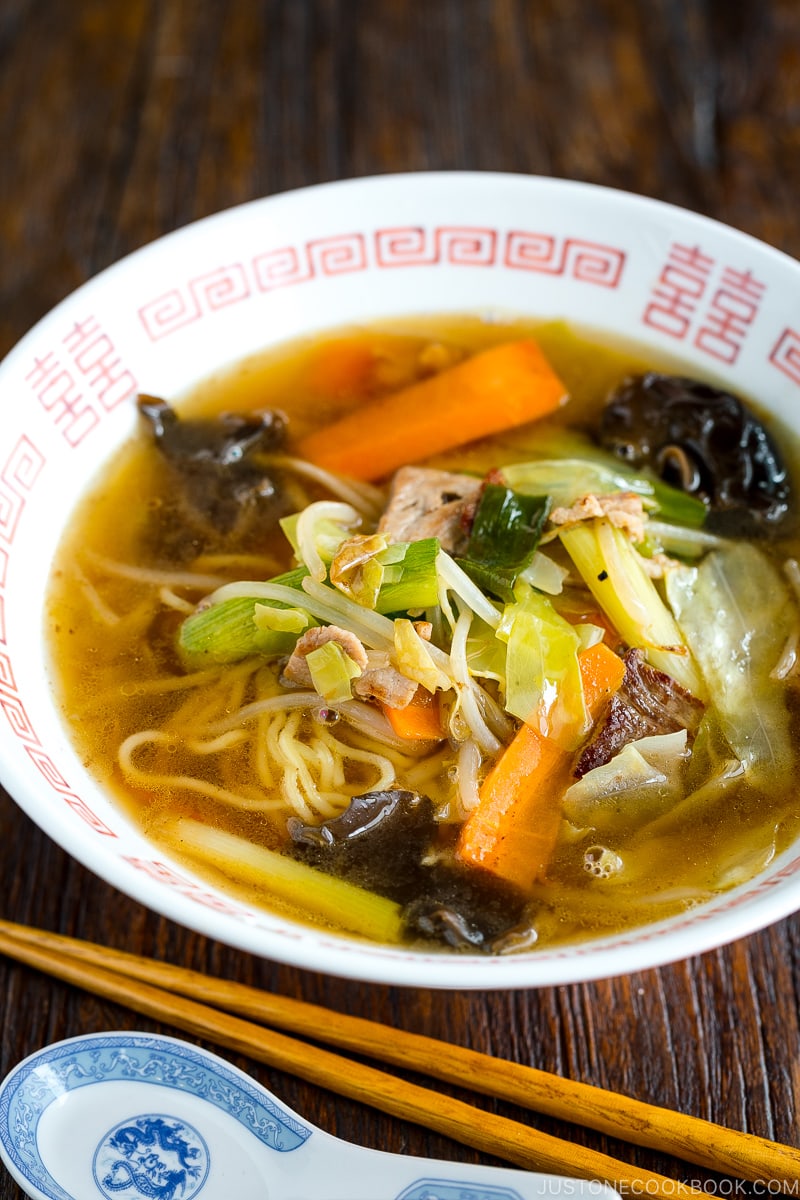
When I am too busy, tan-men is one of the quick ramen menus I serve at home. You have hearty yet light soup and chewy noodles with some vegetables and meat. Compared to heavy ramen broth, tan-men is light and easy on your tummy. Tan-men or sometimes known as Tan Tan Ramen was featured on the popular Japanese TV program called “Shinya Shokudo (深夜食堂)” or “Midnight Diner: Tokyo Stories” which is now available on Netflix.
An Episode of Tan-Men from Midnight Diner: Tokyo Stories
Midnight Diner features Japanese dishes that are more representative of home-cooked recipes than Japanese restaurant menus in the US. If you’re interested in Japanese home-cooked meals, you will enjoy this show as much as I do!
Tan-Men episode is Season 1, Episode 1 on Netflix.

Introducing Chuka-Dashi Powder
Fun Fact: It’s actually not common to make chicken stock from scratch in Japan because it’s not easy to find chicken bones or whole chicken at local Japanese grocery stores. Therefore the Japanese use the Chuka Dashi Powder (中華だし) to make Asian (especially Chinese) cooking. Do you know what this is?
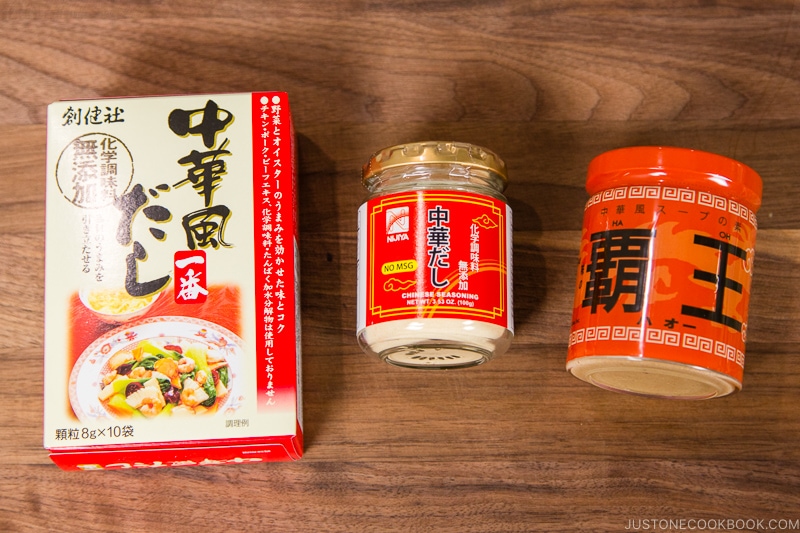
While Japanese dashi is typically made of kombu, bonito flakes, and/or anchovies (read this detailed post about dashi), Chuka (meaning “Chinese” in Japanese) Dashi is basically the soup (湯) that is made with chicken, pork, and/or oyster or clams, for making the soups or the sauces in Chinese cooking.
Just like Japanese dashi powder, you need to dissolve chuka dashi powder in hot water to make the soup stock. This seasoning is sometimes sprinkled over stir fry dishes to give some additional flavor.
In case you’re wondering, dashi powder in Japan is mostly MSG-free.
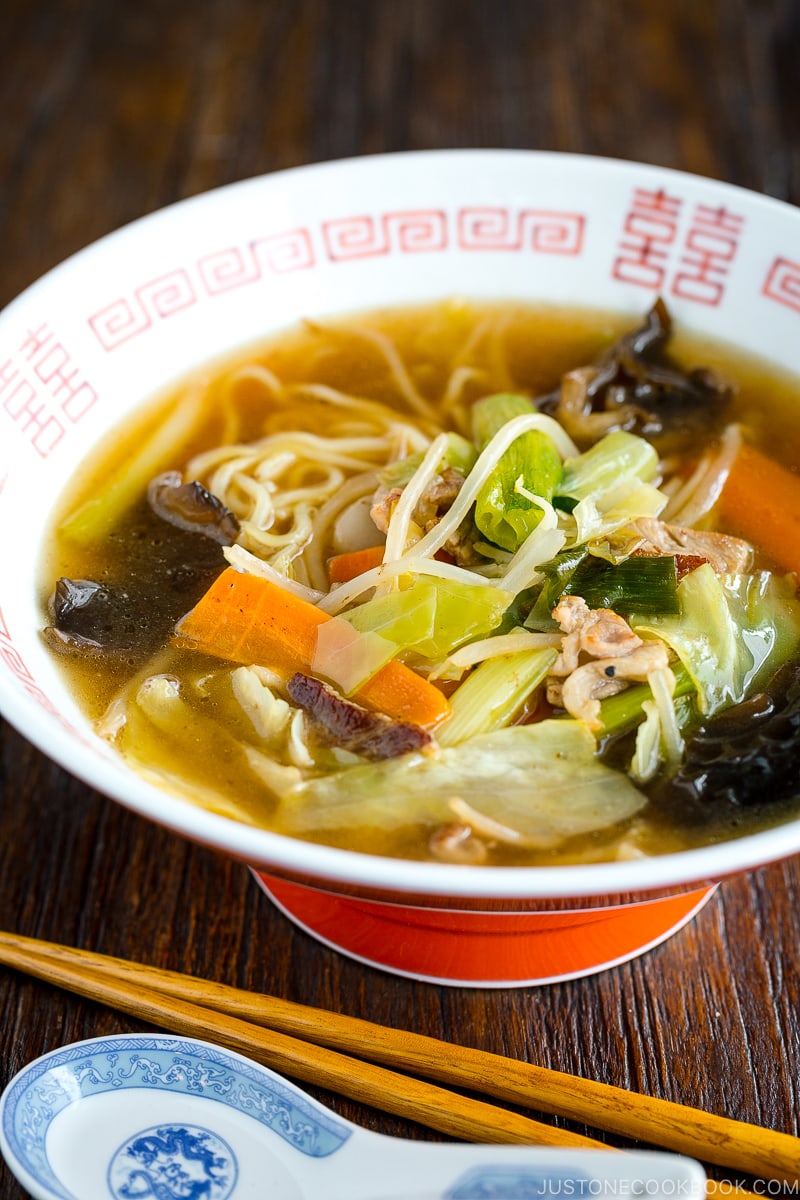
Asian vs. Western Chicken Stock
Recommendation: When you make Asian food with chicken stock, I highly recommend using chicken stock made with simple chicken, ginger, and green onion (and garlic), and not western chicken stock made with carrots, onions, or other vegetables in it. As you can imagine, the chicken stocks taste very different.
You can purchase a can of chicken stock like these in Asian grocery stores.
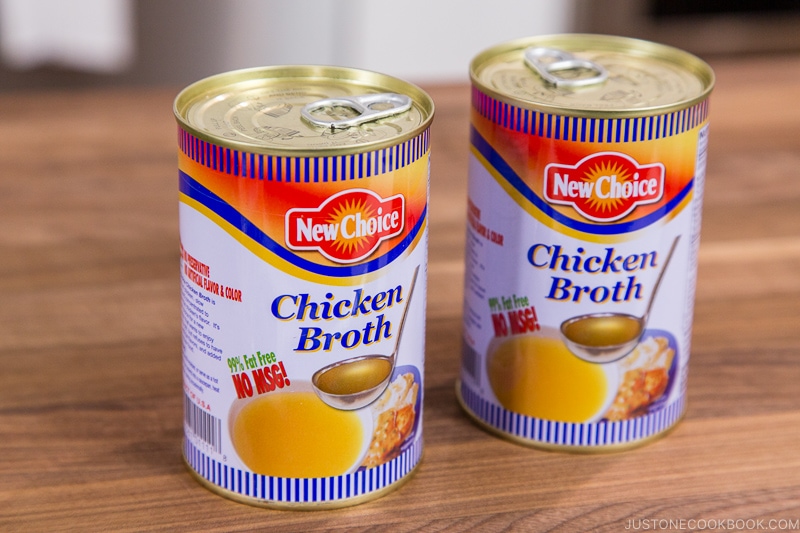
However, I know many of you prefer making stock from scratch, so here’s a quick tutorial on how to make Homemade Chicken Stock.

Ingredients for Tan-Men
Meat: Usually sliced pork belly is used in Tan-Men. You can find these sliced pork belly in Japanese, Korean, or Chinese grocery stores. They look like bacon but they are raw and not cured. You can substitute it with other kinds of meat.
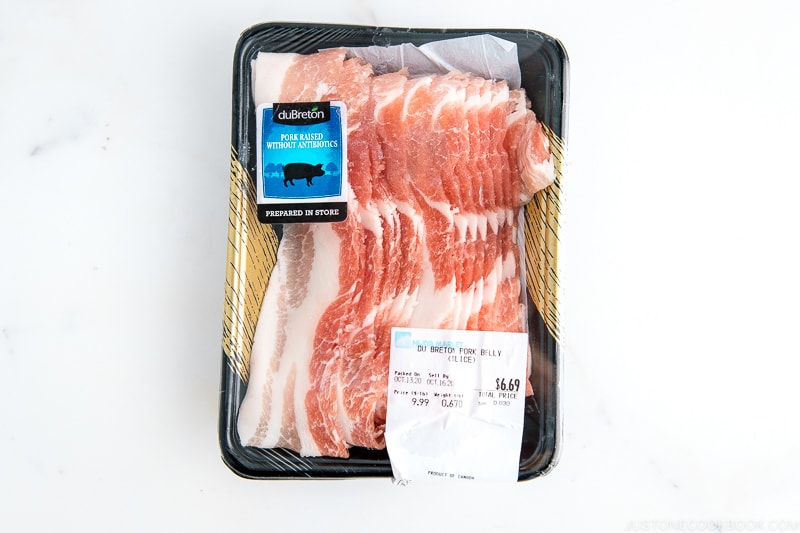
Vegetables/Mushrooms: Typically these five ingredients are used. Cabbage, carrot, bean sprout, green onion, and dried wood ear mushrooms. Dried wood ear mushrooms are often found in Chinese dishes, and it is mainly added for the texture. It comes in a big package so you could omit it if you don’t plan to use it for other recipes. But it’s a fun ingredient to experiment with and makes the dish more authentic.
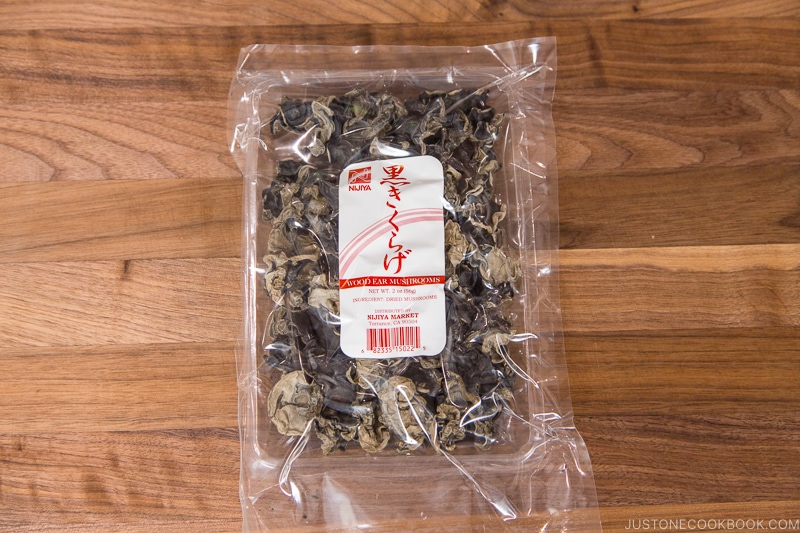
Noodles: I used noodles from Tan-Men package I purchased at my local Japanese grocery store. You can use ramen noodles or Chinese-style noodles.
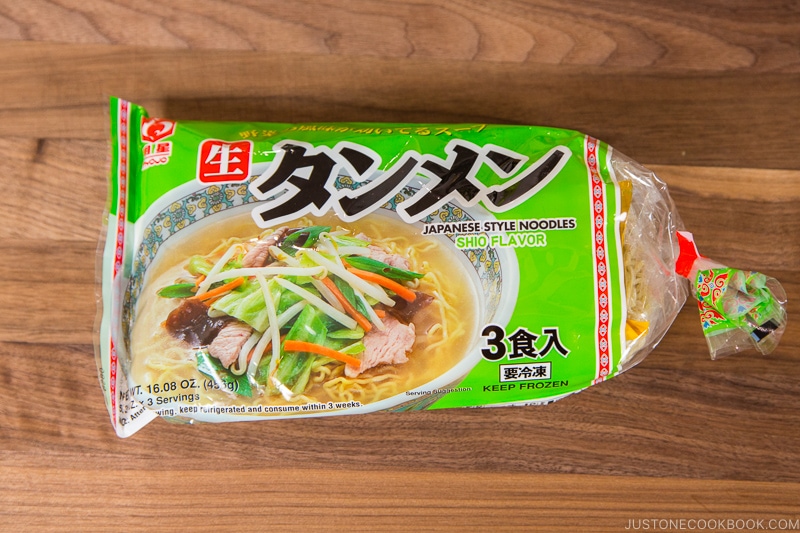
In the Tan-Men episode of the Midnight Diner series, some customers ask the master (the chef at the diner) to make Tan-Men without noodles because they are eating at late night. Tan-Men has lots of vegetables in the soup and it’s quite fulfilling. But I have no willpower to eat Tan-Men without noodles. How about you?
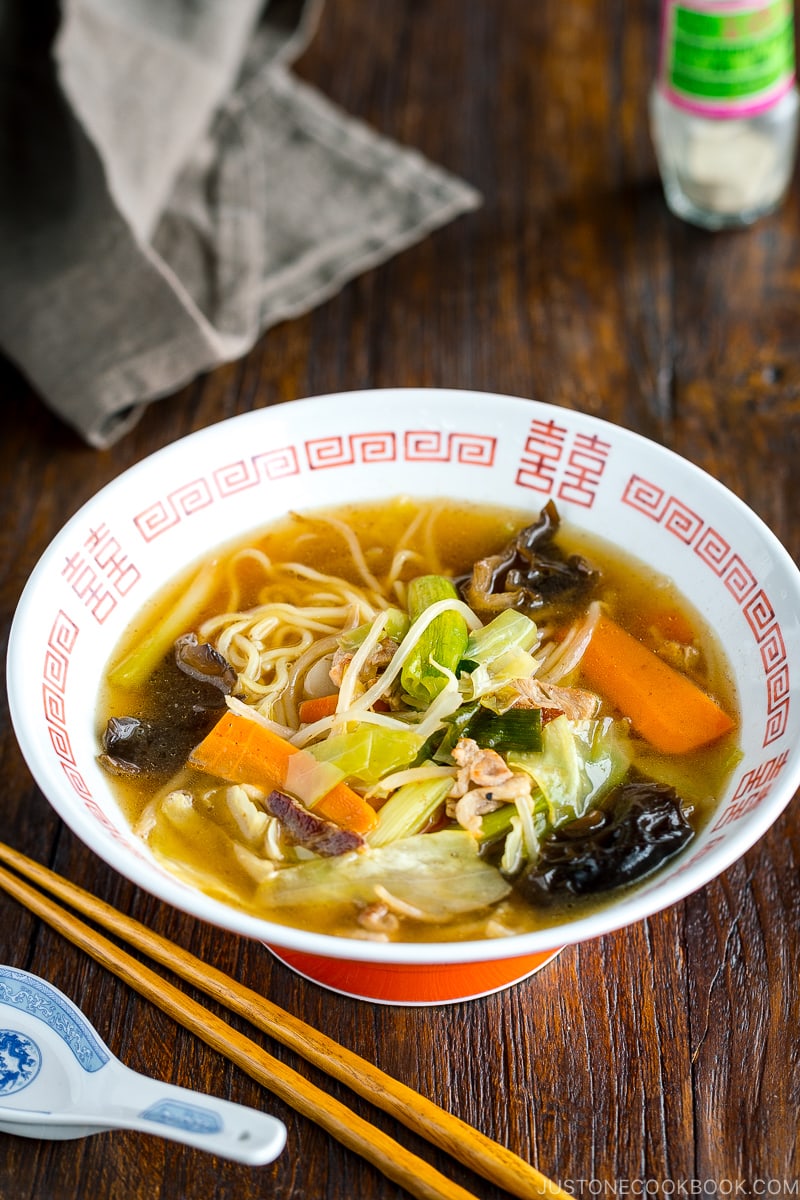
Other Japanese-Style Chinese Dishes
- Mapo Tofu
- Pork Shumai (Steamed Pork Dumplings)
- Beef & Green Pepper Stir Fry
- Nikuman (Steamed Pork Buns)
- Black Sesame Dan Dan Noodles
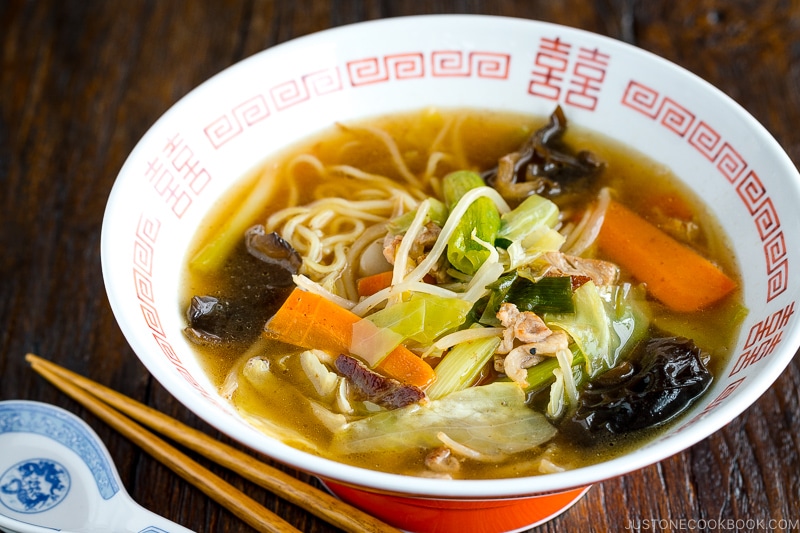
Wish to learn more about Japanese cooking? Sign up for our free newsletter to receive cooking tips & recipe updates! And stay in touch with me on Facebook, Pinterest, YouTube, and Instagram.
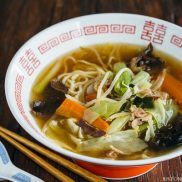
Tan-Men
Video
Ingredients
- 6 pieces dried wood ear mushrooms (0.14 oz, 4 g)
- 3 green onions/scallions
- 4–5 leaves green cabbage
- 2 inches carrot
- 4 oz bean sprouts
- 1 Tbsp neutral oil (for stir-frying)
- 4 oz sliced pork belly
- 1 Tbsp sake
- ⅛ tsp freshly ground black pepper
- ¼ tsp Diamond Crystal kosher salt
- 1 tsp toasted sesame oil
For the Noodles
- water (for boiling the noodles)
- 2 servings fresh ramen noodles (10–12 oz or 283–340 g fresh noodles)
For the Chicken Stock (3⅓ cups or 800 ml) (see Notes for homemade stock)
- 4 tsp Chuka Dashi (Chinese seasoning) (for my homemade recipe, please click here; please read the blog post about Asian chicken stock vs. Western chicken stock; it‘s recommended to use Asian chicken stock for this recipe)
- 3⅓ cups water (hot)
Instructions
- Gather all the ingredients.
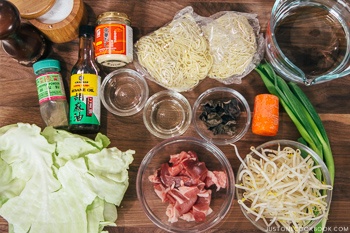
To Make the Soup
- In a medium saucepan, dissolve 4 tsp Chuka Dashi (Chinese seasoning) in 3⅓ cups water (hot). Mix well and bring to a boil, then set aside. Alternatively, you can use my homemade chicken stock recipe.
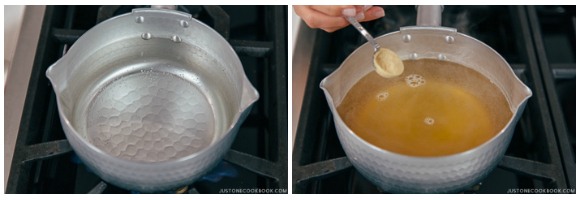
To Prepare the Ingredients
- In a small bowl, add 6 pieces dried wood ear mushrooms and add just enough water to cover them. Rehydrate until soft and squeeze to remove the water. Cut 3 green onions/scallions into 2-inch (5-cm) pieces.
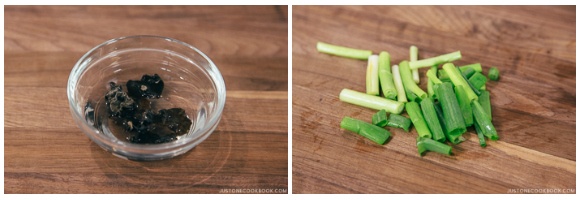
- Cut 4–5 leaves green cabbage into bite-size pieces. Cut 2 inches carrot into thin slabs and then cut them in half. Rinse 4 oz bean sprouts under running water.
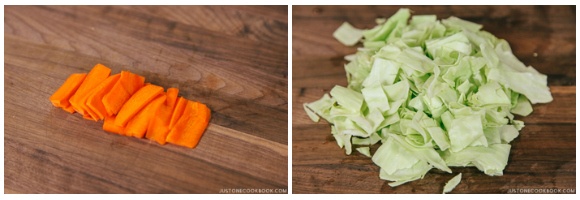
To Cook the Toppings
- Start preparing a big pot of water to cook noodles. While waiting, heat the wok or large frying pan on medium-high heat. Once it’s hot, add 1 Tbsp neutral oil and swirl the oil around to coat the wok. Then, add 4 oz sliced pork belly and cook until no longer pink.
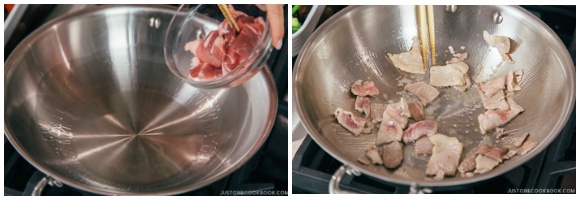
- Add 1 Tbsp sake to the meat and quickly stir. Then, add the wood ear mushrooms, green onion, and carrot.

- Add the cabbage and bean sprouts.
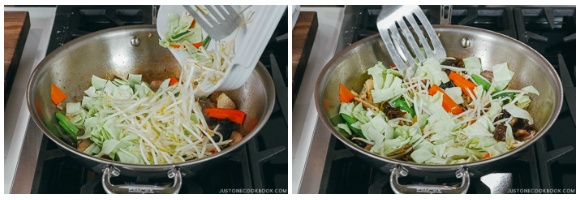
- Season with ⅛ tsp freshly ground black pepper and ¼ tsp Diamond Crystal kosher salt.
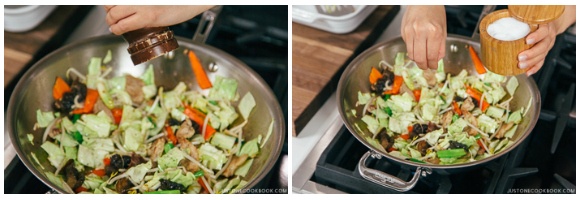
- Once the cabbage is tender, add the chicken stock and 1 tsp toasted sesame oil and bring to a simmer.
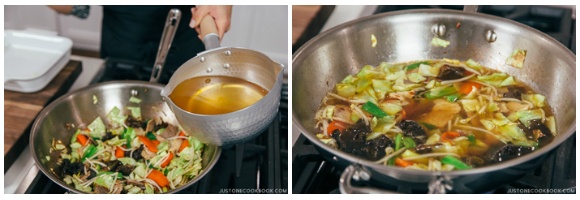
To Cook the Noodles
- When the water is boiling, add 2 servings fresh ramen noodles by loosening them up with your hands. Cook the noodles according to the package instructions and drain well.
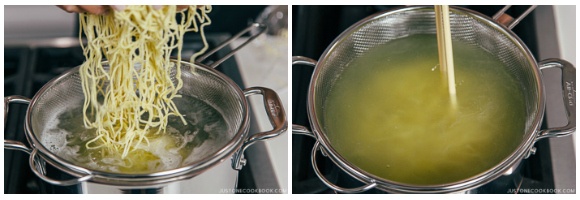
To Serve
- Divide the cooked noodles into two bowls. Add the toppings and soup over the noodles and serve immediately.
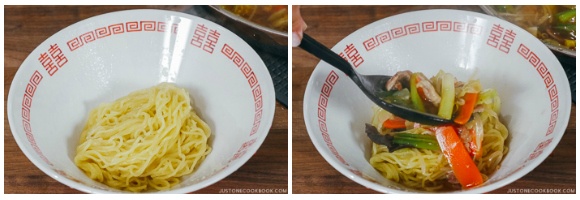
- A dash of white pepper is great for enhancing the noodles‘ flavor.
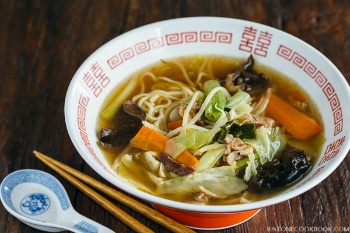
To Store
- Keep the leftovers in separate airtight containers: the toppings, soup, and noodles (uncooked). Store them in the refrigerator for up to 3 days or in the freezer for a month. Cook the noodles right before you serve.
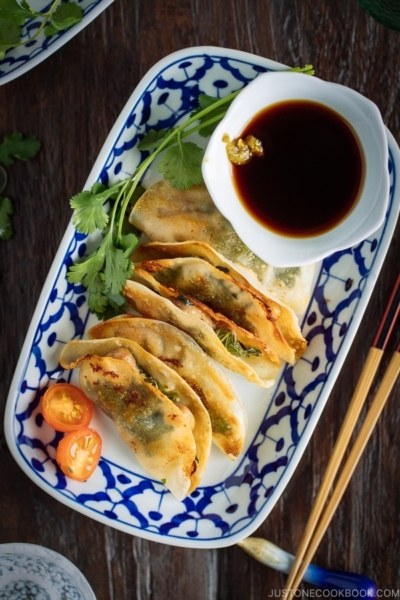
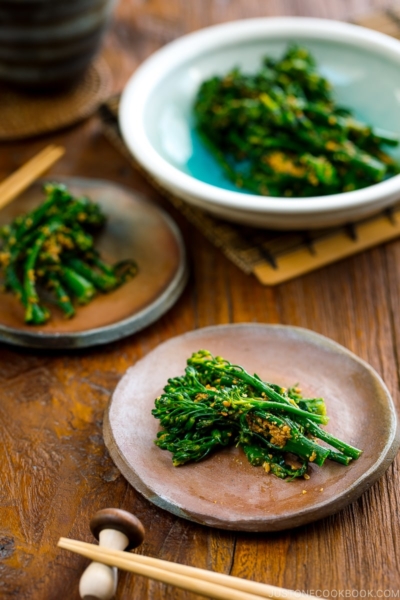

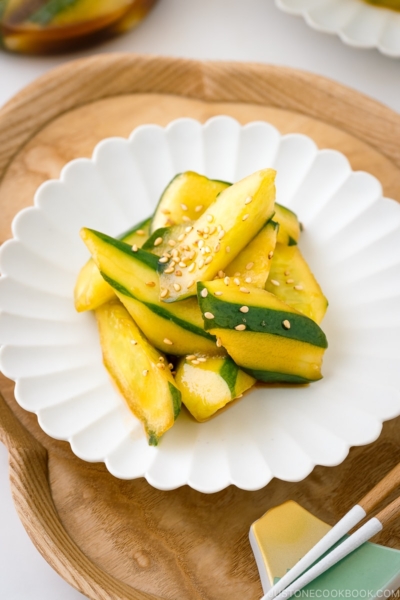





Had this for lunch yesterday, thanks for another tasty meal
Hello, Trish! We are glad to hear you enjoyed this dish!
Thank you for trying Nami’s recipe and for your kind feedback! Happy Cooking!
I wanted to ask if I could use a vegetable broth instead of a chicken broth?
Hi CKTLYNS, Thank you very much for reading Nami’s post and trying her recipe!
The western vegetable broth might make it like western soup instead of Asian noodle soup, how about Shiitake dashi? https://www.justonecookbook.com/shiitake-dashi/
We hope this helps!
Hi Nami! Is there a vegan/vegetarian substitute for the pork belly or can I just make this recipe without the meat? I know the pork belly would impart flavor and I was wondering if there was a vegan substitute for it? Dried Shiitake mushrooms maybe?
Hi Wendi! Thank you very much for reading Nami’s post and trying her recipe!
As you mentioned, the pork flavor is important in this recipe.
Shiitake mushrooms would be a better substitute. Still, it would probably taste better with extra ingredients such as ginger and garlic.
You can also try Aburaage (Japanese Fried Tofu Pouch: https://www.justonecookbook.com/aburaage/) and add vegetarian mushroom flavored stir fry sauce for extra flavor.
We hope this works for you!
This recipe was amazing! I really felt as though I were eating (or maybe cooking) at the Midnight Diner. We had it with noodles, but the next day, I ate the leftover soup without. Let’s just say, if I find myself without noodles in the freezer, I’d definitely still make this dish. So good!
Hi Lindsay, Thank you very much for trying this recipe and for your kind feedback!
We are glad to hear you enjoyed homemade Tan-Men till a single drop.😁
I am dying to try to make this recipe, thank you! Will be checking out our local Japanese market to see if I can get the ingredients. I do have one question for you. On the show, when he is making this dish in the opening credits he is stirring something brown, gravy like, into the stock…what is that? Dashi? Would love to know…
Hi Jennifer, We hope you get all the ingredients and able to create this dish soon! We are not sure what is exactly, but we think it is the Chuka dashi Chinese condiment. We hope this helps!
Simple yet tasty. Quick to prepare and you get a full stomach. An everyday meal just as I like it 🙂
Hi Andreas, Thank you very much for trying this recipe and for your kind feedback! We are glad to hear you enjoyed it!
Nami chan –
You should get a Nobel prize for this recipe. It is one of the best dishes we make.
Hi Bkhuna, Aww… Thank you very much for your love and support! Nami is very happy to hear about this!🥰 Thank you very much for trying this recipe.
And you are to be commended for the production quality of this site. First rate.
Hi Bkhuna, Aww… Thank you very much! You are making my days brighter!☺️
I have enjoyed your recipes for a while since I because obsessed with Japanese food and was led to the show Midnight Diner because of this page. I just wanted to say thank you! I admire your hard work to bring Japanese home cooking recipes online.
Hi Valerie!
Aww… We are so glad to hear you enjoyed it!
Thank you very much for your sweet feedback!
I’m not Japanese, but I do enjoy watching the show and reading your recipes. Comfort food international!
I was inspired by the opening scene of the soup stock being made, would you happen to have a recipe for it? I’m intrigued…..😋
Hi Shu!
Here is a recipe for Nami’s Homemade stock. https://www.justonecookbook.com/homemade-chicken-stock/
Enjoy!😊
Are you Edokko? Your soup looks a little dark for tanmen, at least in my experiences eating it many times in Central Tokyo. 🙂 Since I left Tokyo in 2010 and have been back only one time I’m going to have to try your recipe.
Hi Robert! I’m Hamakko (浜っ子) who was born in Osaka (because my mother is from there) so I know both west and east food and preference. 🙂 Well, if you look at the recipe, the chuka dashi is the only color for the soup. 😉
Hi Nami, we love your website, its our go to for all Japanese dishes – I haven’t found one yet that wasn’t the best! And we just discovered Midnight Diner, so so good. In the opening scene while he is making the broth for the pork miso soup, he tears off pieces of something gray with black spots, looks squishy, I cannot figure out what that is. Do you know?? We are just starting Season 3 & it’s driving us crazy!
Hi Janine! Thank you so much for using my recipes! SO happy to hear you enjoy them. It’s called Konnyaku.
https://www.justonecookbook.com/konjac-konnyaku/
So happy to hear you enjoy the MD series! 🙂
Hi! Thank you for this recipe! I really loved this episode of Midnight Diner too! I was wondering if I could pack this for my son’s lunch in a thermos or would it be better served immediately after cooking?
Hi Rose! It’s really up to your son, but in general, Japanese don’t like noodles getting soggy (kind of similar concept as overcooked pasta). So we wouldn’t pack noodle soup for lunch box, even in a thermos. I would save it for home lunch. 🙂
Hi! I wanted to know what kind of sake brand you used to add to this dish.
Thank you
Hi Abi! I use one of these 3 sake brands that go on sale (https://www.justonecookbook.com/sake/). 🙂
Hi, I also live in San Francisco. Wondering where you get your ingredients here. Do you get them in Nijiya market or where do you recommend to go for Japanese specific ingredients.
Hi Melson! I go to Nijiya in San Mateo (I live in Peninsula) to get almost every Japanese ingredients I use for my recipes. 🙂
Hi Nami!
I’ve recently started watching Midnight Dinner, and I really wanted to make タンメン at home. I was looking at the ingredients and I read about Chuka Dashi. The problem is I can only find Chuka Aji… Will it be the same? It’s from Ajinomoto, so I suppose is the commercial name for it, but I wanted to make sure before I bought it…
Tanks a lot! 🙂
Hi Miriam! Chuka Aji is Ajinomoto’s version of MSG for Chinese dishes and not really chicken soup/stock. Can you get chicken stock or chicken bone broth? You can use it instead. 🙂 If you want to make it more similar to Japanese way, you can buy chicken stock by Japanese brand like this one: https://amzn.to/2OcTVQ2 (It’s powdered). 🙂
Hope you enjoy the recipe!
ありがとうございます!I bought the chicken stock you suggested. Can’t wait for it to get here so I can try the recipe! Thanks for your quick reply and for your amazing site! Will cook your spinach salad while I wait for the stock to arrive 😊
よかった! Hope you enjoy the spinach salad meanwhile. 🙂 Enjoy Tanmen! xo